Kennedy and Blake Buist roll a toy grocery cart through their kitchen, with a stuffed monkey propped on the cart’s seat and the bin full of plastic bowling pins.
“They’re bananas,” the children exclaim in near unison.
In the world of pretend, where children often travel, bowling pins become bananas and stuffed monkeys become their connoisseurs. Giggles erupt like fizz frothing from a shaken soda bottle.
Then it’s time for a breathing treatment.
Elizabeth Buist, Kennedy and Blake’s mom, instructs the children to put on their vests. Kennedy, 4, grabs a purple vest and Blake, 2, dons a black one.
Elizabeth straps on the vests. The children appear as if they’re preparing for a boat ride or a day at the pool. Until their mom inserts hoses into the sides of the vests, hooks them into machines, and turns the machines on.
It doesn’t matter where or how far in Pretend Land the children have traveled. This moment, this sound, always brings them back to reality.
Kennedy and Blake both suffer from cystic fibrosis. They undergo these treatments twice a day, every day, to loosen mucus in their lungs.
The machines on the living room floor hum as Kennedy and Blake’s upper bodies vibrate wildly.
A surprising scene for a stranger, perhaps, but this is an everyday norm for the Buist children.
The kids play with Mega Bloks as they shake to the rhythm of their machines. Blake starts on a red and yellow tower. Kennedy crafts a keyboard with her blocks.
What would she share with the world if she could type on it?
Perhaps she would write about their hopes for the future. Kennedy wants to be a police officer when she grows up. Blake has designs on becoming a dinosaur, or, if he can’t do that, at least digging for one.
The treatments last 30 minutes. Sometimes the children dance and sing to help the time pass. Other times they watch cartoons.
“I want ice cream for lunch,” Kennedy announces, her voice dripping with vibrato as the machine shakes on.
Disturbing diagnoses
Elizabeth and her husband, DJ, learned something may be wrong with Kennedy 20 weeks into the pregnancy. An ultrasound showed a possible bowel abnormality. That bowel eventually ruptured and Kennedy arrived into this world at 33 weeks.
She stayed in neonatal intensive care for 65 days. She underwent bowel surgery at 1 day old and had an ostomy bag for six weeks.
“It’s a miracle that she’s here with us,” Elizabeth says.
An infant screening also confirmed Kennedy had cystic fibrosis, a genetic condition in which the lungs and digestive system become clogged with thick, sticky mucus.
Two years later, when Elizabeth was 30 weeks into her pregnancy with Blake, more bad news came. An ultrasound showed the same bowel abnormalities that Kennedy had. The doctor told them it was most likely cystic fibrosis.
“We didn’t really tell people because if it wasn’t the case there’s no sense getting people worked up about it,” Elizabeth recalls. “I was nervous, but tried not to stress myself out.”
After Blake was born at 39 weeks, the suspected diagnosis was confirmed. Elizabeth and DJ carried on, undaunted. They had done this before. They could do it again. They walked the bright side.
“I think Kennedy and Blake don’t feel so alone because they can do treatments and medications together,” Elizabeth says. “They encourage each other and support each other when they would rather be doing something else.”
“I think sometimes it’s a little easier to have two children with the disease because they don’t feel so alone.”
Elizabeth learned that 1 in 30 people in the United States carries the faulty gene, but both parents have to be carriers for the child to have cystic fibrosis.
With both parents as carriers, there’s a 1 in 4 chance a child will be born with the disease. For the Buists, it turned out to be a 2 out of 3 chance.
The couple’s youngest, 11-month-old Colton, tested negative for the disease.
By the time Colton arrived, giving daily treatments and mounds of medications to Kennedy and Blake had become the norm for the family. Elizabeth didn’t quite know how to handle a child without the disease.
“I felt like a new mom all over again,” she recalls. “I didn’t know what was normal and what wasn’t normal. I had to ask a lot of questions of my pediatrician. We’ve been really lucky with amazing physicians.”
Charles McCaslin, MD, a pediatric pulmonologist with Spectrum Health Helen DeVos Children’s Hospital, notes that it’s not that rare to have two children with cystic fibrosis in the same family. Odds are 1 in 16.
The children’s hospital Cystic Fibrosis Clinic has multiple sets of siblings.
“DJ and Liz have been able to find, in my opinion, the perfect balance between diligence in delivering the needed medications, supplements, treatments and nutrition, with allowing Blake and Kennedy to experience a childhood just like their peers,” Dr. McCaslin says in praise of the couple. “They are thriving and both have a very bright future.”
Lifespans increasing
The median age of survival for cystic fibrosis patients from 1989-93 was just over 28 years. Now, it’s 40 years.
According to Cystic Fibrosis Foundation statistics, in 1986 only 30 percent of patients were 18 or older. In 2013, that number jumped to 50 percent.
“We feel it is an important message for parents that CF now is not the same CF of 10-15 years ago,” Dr. McCaslin says. “Life expectancy is increasing exponentially.”
Blake and Kennedy visit the Cystic Fibrosis Clinic at Helen DeVos Children’s Hospital every three months for about three hours for thorough progress testing, including weight, height, oxygen level and muscle-squeeze testing.
Elizabeth said no matter what the medical condition, it’s important to remember that they’re just kids. They play outside. They run. They giggle uncontrollably. They lash out in anger and frustration. They are, sans the disease, kids.
“A lot of people call them CFers,” she says. “I try not to call them that. I always say they are children who happen to have CF.”
As Elizabeth spoke, Blake, in a shaky voice with medicated vapor rising from his mask, asks to watch his favorite cartoon.
Colton balances himself on the machine into a standing position as Elizabeth turns on Nick Jr. She explains that there are more than 1,800 different mutations of the disease. Her children have one of the most common ones.
In addition to medications that break up the mucus, Kennedy takes five enzymes and Blake four—each time they have a meal or snack.
Because of the disease, the children are pancreatic insufficient and can’t break down fat and protein in their bowels. The enzymes aid the digestion process.
After this particular treatment, it’s time for lunch. A typical big lunch. SpaghettiOs, cheese balls, potato chips, chocolate pudding and gelatin (two servings of orange for Kennedy, her favorite flavor). Children with cystic fibrosis need to eat more, especially high-fat foods.
“Eating is almost like a medicine for them,” Elizabeth explains.
She knows the disease is in control. She respects that. She even volunteers to help other families understand that. She gives her time to the Cystic Fibrosis Clinic at the children’s hospital and also volunteers for the national Cystic Fibrosis Foundation.
A new perspective
“All this has really opened our eyes to see life in a different way,” Elizabeth says. “We don’t take health for granted. It gave us a new outlook on life. There are so many things in this world bigger than just us. We have learned to have a very deep respect and appreciation of life.”
Sometimes during the daily routine, it may be easy to get discouraged, but that does nothing for her children, or for her.
“You’ve got to look at the positives,” she continues. “Yes, this stinks, but the kids have really shown us, regardless of all the things they’ve gone through, they don’t let it affect them one bit. They don’t complain. How can we, as parents, not take something from that?”
There are moments when the children question why they have to take pills or why they have to be hooked to a machine. Their friends don’t.
Elizabeth explains that they have a disease. And they seem to accept it.
Mom glances at her children sitting at the kitchen table, one with chocolate pudding smeared on his face and the other sucking orange gelatin from her spoon. These are the moments. The everyday moments she will someday cherish.
She looks toward a bright future, sunnier than Kennedy’s yellow dress.
“With all the medicines coming down the pipeline, it’s not just a childhood disease anymore,” Elizabeth says with an edge of determination in her voice. “It’s an amazing time. They’re going to graduate high school and college. They’re going to get married and have kids and I’m going to have grandkids. That’s something I can say they will do. It’s not just hope.”
But there is a glimpse of a possibility that slices the sunshine.
“I have my kitchen floor moments,” Elizabeth admits. “Some days it’s really hard, especially if you hear about someone who has passed away. There are families out there that do everything right and it still happens.”
But no one is immune to what life may hurl.
“He could be diagnosed with cancer next year,” she says, nodding at Colton as she cradled him in her arms. “Or I could. The reality is anything can happen to anybody at any given point.
“We constantly remind ourselves about how lucky we are,” Elizabeth continues. “We are lucky to live in a time and place that offer therapies and medicine to keep people with CF healthy and living as well as they can. We don’t have to drive a very long distance to get to our care center. We have an amazing support system. We have so many things to be thankful for, and that is humbling.”
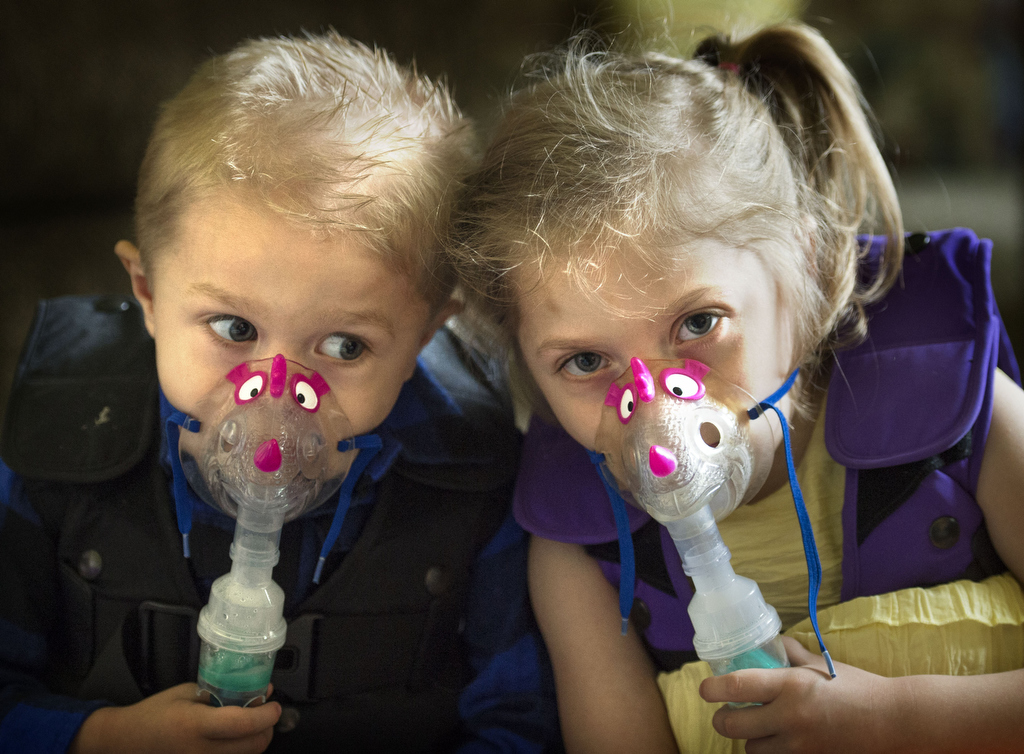


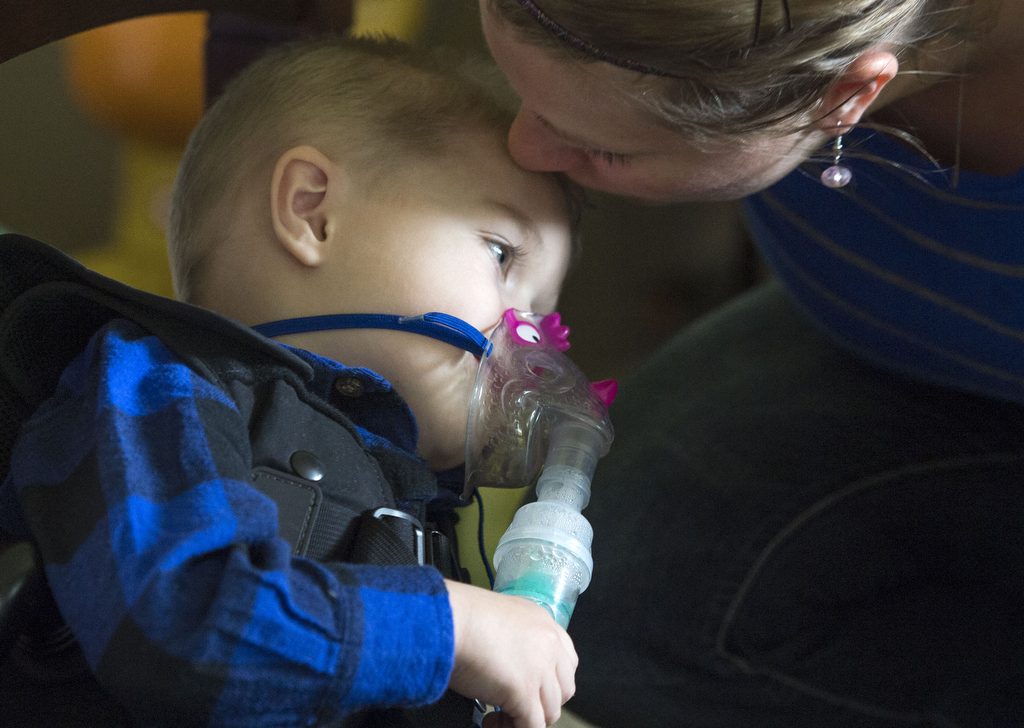




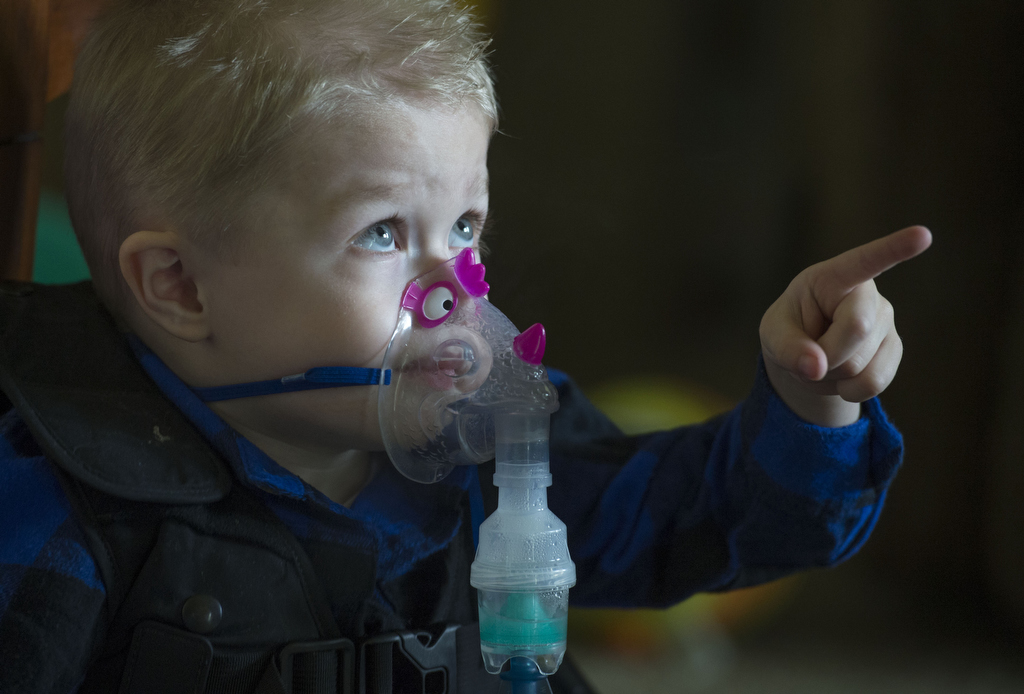
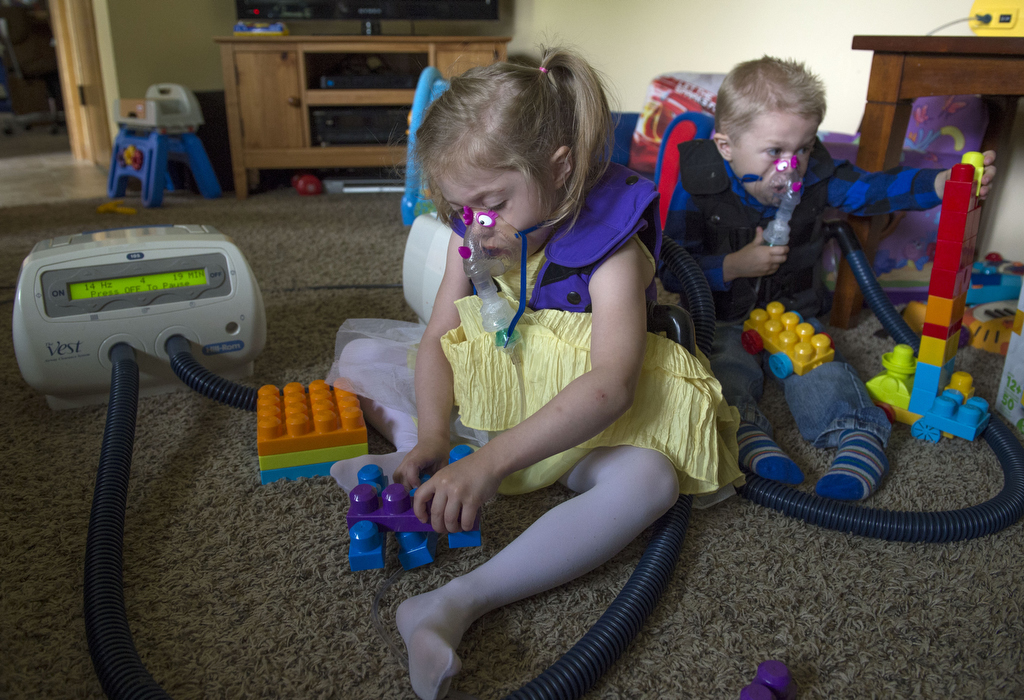

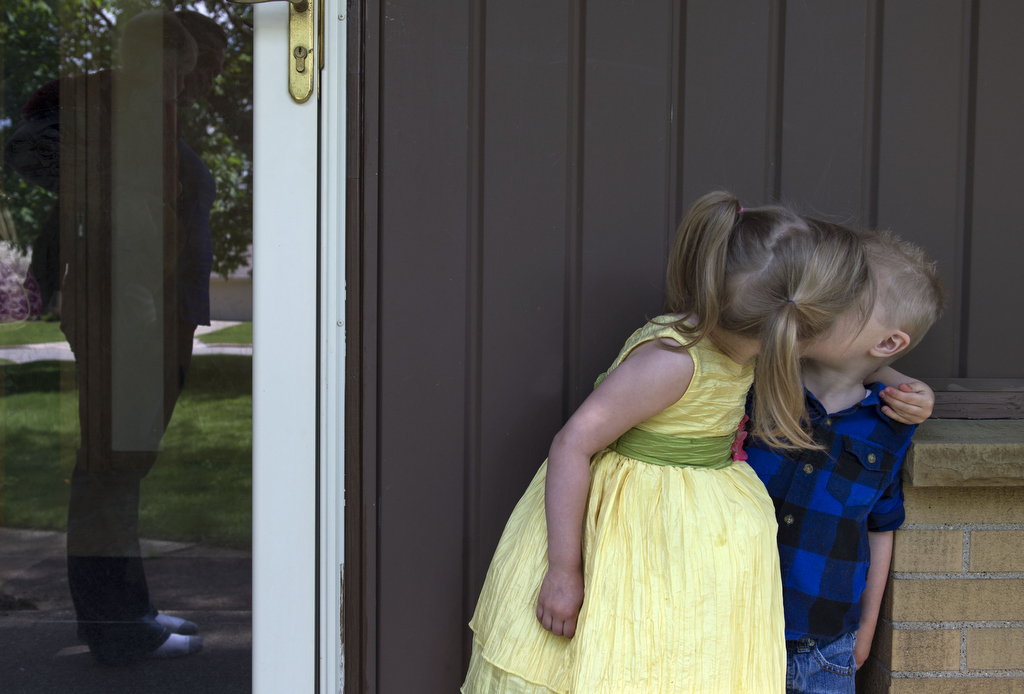


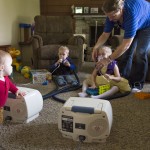
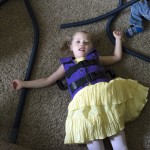

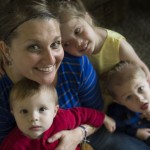







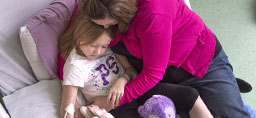 /a>
/a>
 /a>
/a>
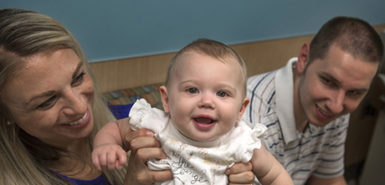 /a>
/a>
I think Liz and DJ are fantastic people and parents.My hats off to them and there beautiful family..God Bless and Love to them all..Gerri Harnish
I hope they find a cure soon!